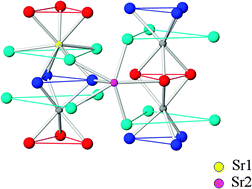The structure of strontium-doped hydroxyapatite: an experimental and theoretical study†
Abstract
First-principles modeling combined with experimental methods were used to study hydroxyapatite in which Sr2+ is substituted for Ca2+. Detailed analyses of


 Please wait while we load your content...
Please wait while we load your content...